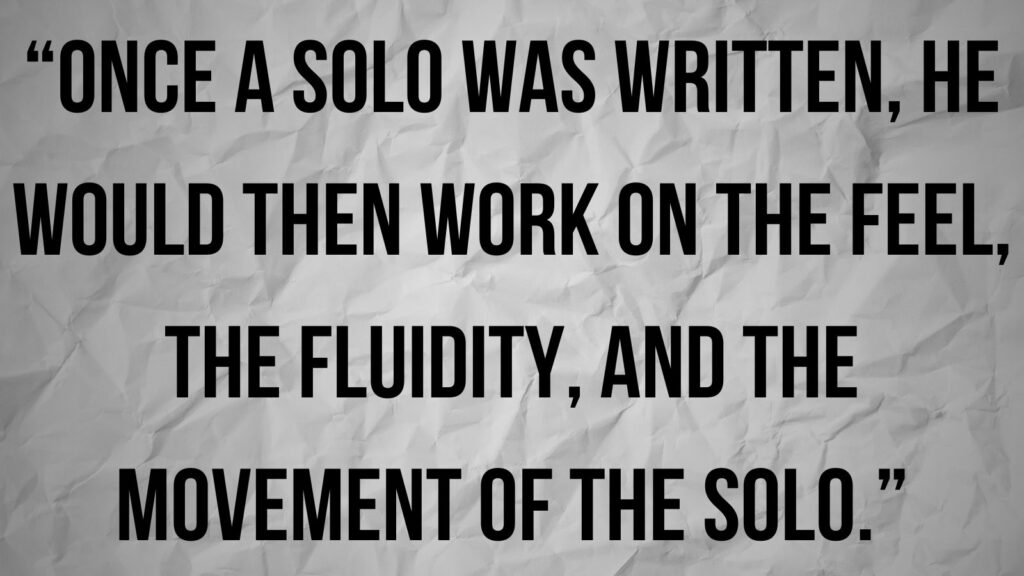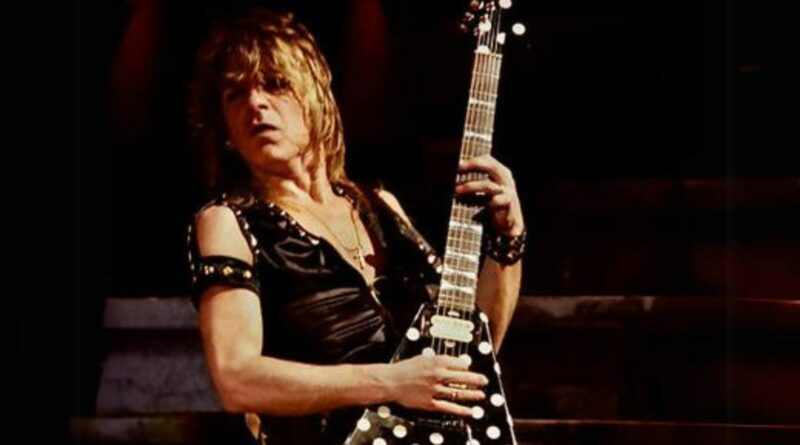Looking back at his work with Ozzy Osbourne on the singer’s debut solo album, producer and engineer Max Norman remembered working with guitar legend Randy Rhoads.
Initially hired as an engineer, Norman ended up doing all the production and engineering work when Osbourne fired Chris Tsangarides. Although not credited on “Blizzard of Ozz,” Max was crucial for the record’s sound and, ultimately, its success. He would then proceed to produce “Diary of a Madman,” “Bark at the Moon,” as well as live releases “Speak of the Devil” and “Ozzy Osbourne Live EP.”
One of his most interesting takeaways from the process was working with Randy Rhoads on Ozzy’s debut solo album. Appearing in a recent episode of the Talk Louder Podcast, Norman pointed out that the guitarist had some trouble performing simply because he wanted to make everything perfect.
“Randy, I think, struggled with everything because he wanted to play it better, play it better, play it better,” the producer recalled (transcribed by Killer Guitar Rigs). “But he was old-school in the fact that, once he knew what to play, he didn’t change the notes. He just changed the way he played the notes, and that’s what he worked on.”
Randy Was a Lot Like Jazz Musicians, Norman Said
Discussing the matter, Norman also compared Randy’s approach to that of jazz musicians. He continued:
“I’ve worked with quite a lot of jazz people. I worked with Clarence Clemons, for instance, a sax player. And what a jazz guy does is, you give them a solo, eight bars. The guy plays five notes.”
“As he goes through it, then plays it again, he plays different five notes. And then he starts playing the same notes, but he’s changing where he’s playing them, how he’s playing, and what emotion he can push into each note.”

“Randy did very much the same thing,” Norman said. “Once a solo was written, he would then work on the feel, the fluidity, and the movement of the solo generally, musically.”
In many ways, Norman feels like Randy Rhoads was like an “old-school” kind of musician. Of course, at this point, he kind of is since his final works were released in the early 1980s.
Old School Player
But back then, during the sessions for Ozzy’s “Blizzard of Ozz” record, Rhoads was only 23 years old. This approach wasn’t something you’d expect from a young guitar player in the hard rock and heavy metal genre. Max added:
“So, in that sense, he’s what Uli [Jon] Roth would call an ‘old-school player’ because he’s looking for the beauty in the notes. He’s not looking for the technical exercise, or the fact that it’s fast or slow, or whatever — he’s looking for it to work, and to work musically, and to be beautiful. And that is an interesting thing.”
Used to working with different kinds of artists, Norman also admits that he didn’t see Randy’s solos as particularly impressive. On the other hand, he was still in awe of the young guitarist’s approach, where he played them until they sounded exactly how he had intended. Norman offered:
“So whereas I thought that his solos were pretty good, but nothing super spectacular to me, I was impressed by the fact that, once he could play them, he continued to play them until he could play them how he wanted to play them. That was the interesting thing to me. It’s kind of a second-level thing. I thought that was a very interesting thing.”
“I Don’t Know If This Is Going to Work Out”
Speaking more of the album and its recording process, Max admits that he was a little skeptical of its potential success. So much so that he felt that the kind of music Ozzy and his new band were doing was outdated.
“And as we as we started to go through it, we’re inside the bubble,” he offered. “So I don’t know if this is going to work or not. This is maybe a couple of years too late in England. We got new age stuff going on. You got pop stuff, you got electronic stuff, you got synthesizers. This is maybe a little dinosaur-ish if you’d like.”
To be fair, Norman’s worries were, in a way, justified to some extent. Ozzy was out of Black Sabbath, and there was this massive shift going on in rock music, as well as the music industry as a whole. To many, it felt like this whole “heavy rock” or “heavy metal” thing was a thing of the past.
Nonetheless, the record ended up being a great commercial success, and it launched Ozzy’s solo career, ultimately making him bigger than Sabbath during the 1980s. And as Norman adds, this is all thanks to the American market at the time.
He added:
“But of course, the US is a big rock place. US loves rock. As soon as he got out to the US, it gets big in the US, and by sort of definition, that comes back to England, and then gets big back in England again.”
Photo: Unknown (Randy Rhoads)


